

Fagan
Shao,
Cabaret:
Pops
Boston
Sing!
Chamber Music Series

SHOP



Fagan
Shao,
Cabaret:
Pops
Boston
Sing!
Chamber Music Series

SHOP



Cover:


By Mary Zimmerman
Dec 1 – 11, 2022 Nafe Katter Theatre


ROE
By Lisa Loomer
March 2 – 11, 2023 Nafe Katter Theatre
DEATH AND THE MAIDEN
By Ariel Dorfman
March 23 – April 2,



Studio Theatre
RENT
Music
by Jonathan Larson April 20 – 30, 2023 Harriet S. Jorgensen Theatre
(860) 486-4226 jorgensen.uconn.edu
Hours Mon-Fri, 10-5 pm, and 90 minutes before curtain.
CRT BOX OFFICE (860) 486-2113 crt.uconn.edu Hours Wed-Fri, 2-5 pm, and 60 minutes before curtain.
COVID-19 POLICIES: Please check our website for the latest policies and procedures: jorgensen.uconn.edu crt.uconn.edu
Latecomers will be seated at the discretion of the artists’ management.
CAMERAS AND RECORDING DEVICES
Strictly prohibited.
SMOKING
Not permitted within 25 feet of the building.
CHILDREN AND INFANTS
Tickets are required for everyone, no matter how young. Children must be 4 years old to attend CRT productions. Minimum 4 years old recommended for Jorgensen Center events.
Located in the upper and lower Jorgensen lobbies and the CRT lobby.
Accessible rest rooms located in the lower Jorgensen & CRT lobbies. Elevator service from the main Jorgensen lobby down to the lower lobby only.
Free from the front office for Jorgensen and Katter Theatre productions.
TOO LOUD?
Free hearing protection is available upon request from the front office.
Can be reported or picked up at each box office.
Enjoy refreshments at your seat. Bars located in the upper Jorgensen and main lobbies of each theater. Food and beverage restrictions may apply due to Covid-19.
CRT: Call the group sales office for more information (860) 486-2113
For the safety of all, bags and backpacks larger than 10” x 10” are prohibited in the theater. Small bags and purses are permitted. An exception will be made for medically necessary items and diaper bags after proper inspection. All bags are subject to search.
Parking is available across from Jorgensen in the North Garage. For a detailed parking map, visit park.uconn.edu
The parking fee for Jorgensen events is now included as part of your ticket price. Patrons will no longer have to pay upon entry or exit in the North Garage. All gates have been removed and gateless parking begins one hour prior to showtime through the conclusion of each performance. Please note: this applies to North Garage only.
IMPORTANT UPDATE: Hillside Road on the UConn Storrs campus will be closed to vehicular traffic between Glenbrook Road and Jim Calhoun Way for the fall semester. This is an effort to enhance safety and make the area friendlier to pedestrians and bicyclists in the center of campus. Motorists who park in North Garage should access the garage by taking Discovery Drive or Glenbrook Road to the garage entrance on north Hillside Road.

We’re proud to support so many award-winning performers. And while it may not be a Tony or Grammy, we’re also proud of own our cast for earning the highest honors in Patient Safety at Manchester Memorial Hospital and 4-Star Quality Care for Medicare and Medicaid patients. From one group of dedicated performers to another, good luck and good health!
Manchester Memorial Hospital Rockville General Hospital John A. DeQuattro Cancer Center ECHN Medical Group


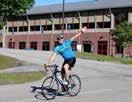

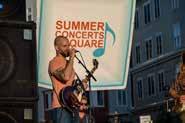


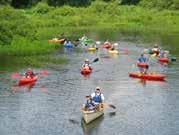







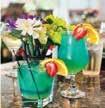
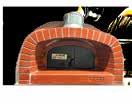

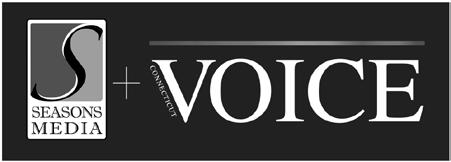
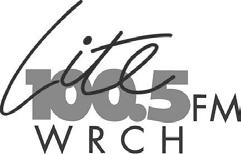
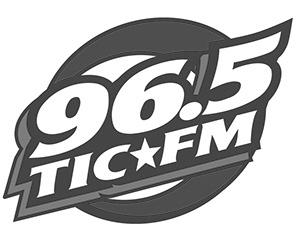
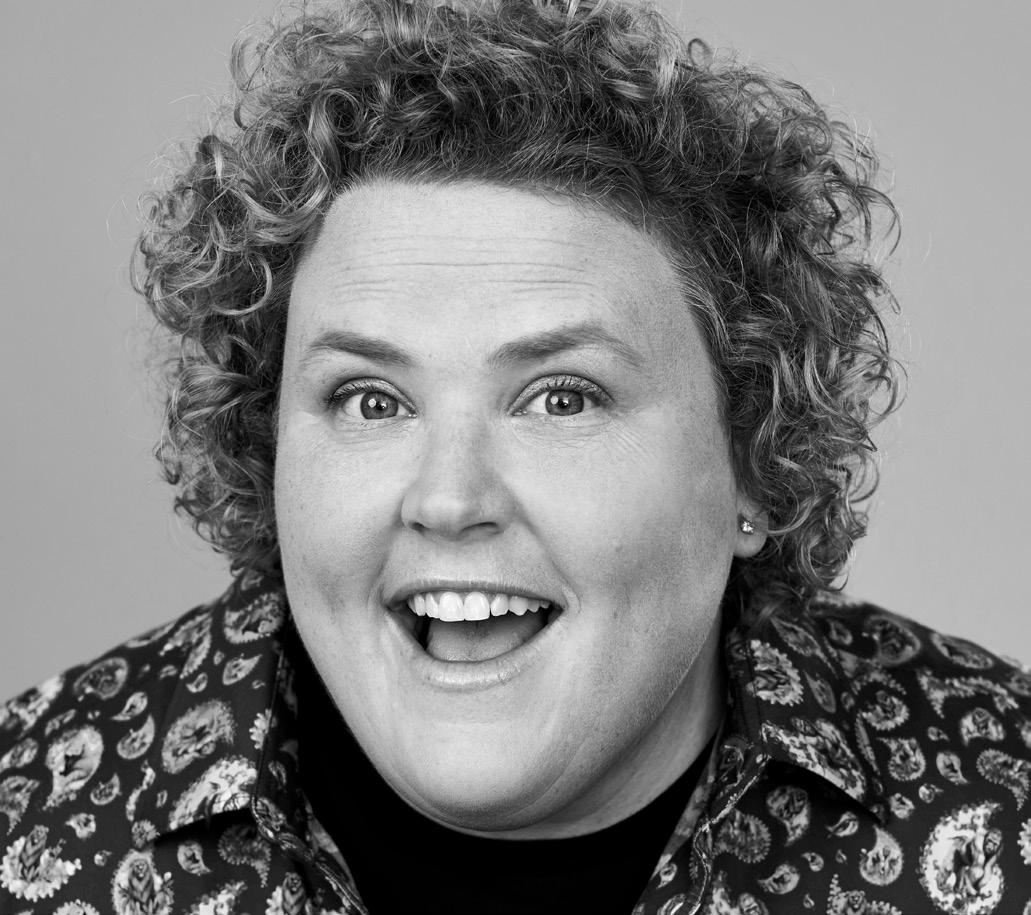
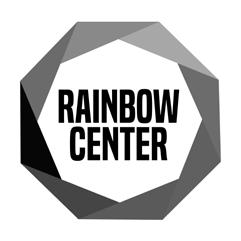
You can catch stand-up comedian, writer, and actor Fortune Feimster on the radio, on screens both big and small, and touring her stand-up across the nation. Fortune Feimster’s first one-hour special, Sweet & Salty, is currently streaming on Netflix and was nominated for Best Comedy Special for the Critics’ Choice Awards. Prior to her one-hour special, Netflix released Feimster’s half-hour special in 2018 as part of The Standups, which received rave reviews. She has done late night TV sets on Conan and Late Night with Seth Meyers and has another acclaimed half-hour special on Comedy Central.
Beginning her career in Los Angeles as a member of the prestigious Groundlings Sunday Company, Fortune Feimster first became known nationally as a writer and panelist on E's hit show Chelsea Lately before starring as a series regular on Hulu’s The Mindy Project and NBC’s Champions. She has gone on to have many guest appearances and recurring roles on TV shows including Ru Paul's Drag Race, Dear White People, Drunk History, Claws, 2 Broke Girls, Workaholics, Glee, Idiotsitter, Tales of the City, The L Word: Generation Q, Life in Pieces, and @Midnight. On the film side, you can catch Fortune in Office Christmas Party, Social Animals, Father of the Year, and Yes Day. You may recognize her voice from TV, in roles including Evelyn on The Simpsons, Brenda on Fox's Bless the Harts, and Ava on Cartoon Network's Summer Camp.
Fortune can currently be heard every morning with Tom Papa on Sirius XM's channel 93 on their show, What a Joke with Papa and Fortune. She also hosts a weekly podcast with her partner, Jax, called Sincerely Fortune. Feimster frequently recurred on Lights out with David Spade on Comedy Central and is currently starring opposite David Spade on the new Netflix series, The Netflix Afterparty. You can catch her playing Pam on NBC’s Kenan or Pinky in the recently released Barb and Star Go To Vista Del Mar. Along with co-writing and selling two comedy pilots to ABC, the latter of which is produced by Tina Fey, Fortune co-wrote and is attached to star in two features, Bad Cop Bad Cop and Field Trip, both of which were acquired by Spielberg’s Amblin Pictures.

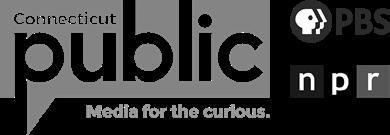

Quartet in D Major, D. 94
Franz Schubert (1797-1828)
I. Allegro
II. Andante con moto
III. Menuetto. Allegretto - Trio
IV. Presto
Quartet in B-flat Major, D. 36
Franz Schubert (1797-1828)
I. Allegro
II. Andante
III. Menuetto. Allegro ma non troppo — Trio
IV. Allegretto
Piano Quintet in G minor, Op. 57
Dmitri Shostakovich (1906-1975)
I. Prelude: Lento — Poco più mosso — Lento
II. Fugue: Adagio
III. Scherzo: Allegretto
IV. Intermezzo: Lento
V. Finale: Allegretto
Winner of first prize and several other awards at the International Music Competition of the ARD in 2008, Apollon Musagète Quartet has rapidly become an established feature of the European musical scene, captivating public and press alike. The quartet studied with Johannes Meissl at the European Chamber Music Academy and was inspired by the musicians of the Alban Berg Quartet at the University of Music and Performing Arts Vienna.
The quartet was nominated ECHO Rising Stars 2010, followed by highly successful performances at prestigious European venues. It was also named BBC New Generation Artist in 2012, leading to extensive touring in the UK and a number of recordings for the BBC. In 2014 the musicians received the Borletti-Buitoni Trust Award.
Recent engagements have taken the quartet to the Auditori Barcelona, Konzerthaus and Philharmonie Berlin, Edinburgh International Festival,
the Chopin and his Europe Festival in Warsaw, Elbphilharmonie Hamburg, Gewandhaus Leipzig, Wigmore Hall London, Concertgebouw Amsterdam, Carnegie Hall New York, Louvre Paris, Schwetzinger SWR Festspiele and to the Tonhalle Zurich.
Apollon Musagète Quartet collaborates with renowned chamber musicians such as Martin Fröst, Nils Mönkemeyer, István Várdai and Jörg Widmann. They appeared in several symphonic series with BBC National Orchestra of Wales, BBC Symphony Orchestra, Dresden Philharmonic and Polish National Radio Symphony Orchestra in Katowice.
They welcome collaborations that integrate chamber music into other performing art forms and were part of projects such as a staged concert by the Berlin based performance group Nico and the Navigators, a ballet production at the National Theatre in Nuremberg and a world tour with the pop singer Tori Amos. Their own compositions Multitude for String Quartet and A Multitude of Shades, both published by the Viennese publisher Doblinger, are often included in the quartet’s concert repertoire.
Since the debut CD by Oehms Classics in 2010 followed by recordings for the labels such as Decca Classics and Deutsche Grammophon, their discography has grown extensively. In 2018 a disc containing quartets by Andrzej Panufnik was released by the Fryderyk-Chopin-Institute and subsequently the latest recording with works by Karol Szymanowski and Roman Palester by Universal Poland.
Piotr Skweres plays an ex-André Navarra cello by Gennaro Gagliano dated 1741. The instrument has kindly been provided by Merito String Instruments Trust Vienna. Furthermore, the quartet thanks the Thomastik Infeld for the generous support and the enterprise Stoffwerk for the exclusive and custom-made concert clothes.
Since his triumph as winner of the 1970 Chopin International Piano Competition, pianist Garrick Ohlsson has established himself worldwide as a musician of magisterial interpretive and technical prowess. Although long regarded as one of the world’s leading exponents of the music of Frédéric Chopin, Mr. Ohlsson commands an enormous repertoire, which ranges over the entire piano literature. A student of the late Claudio Arrau, Mr. Ohlsson has come to be noted for his masterly performances of the works of Mozart, Beethoven and Schubert, as well as the Romantic repertoire. To date he has at his command more than 80 concertos, ranging from Haydn and Mozart to works of the 21st century, many commissioned for him. In 2018/19 season he launched an ambitious project spread over multiple seasons exploring the complete solo piano works of Brahms in four programs to be heard in New York, San Francisco, Montreal, Los Angeles, London and a number of cities across North America. In concerto repertoire ranging from Mozart and Beethoven to Brahms and Barber, he returned to the Nashville, Oregon, Dallas Symphonies, Washington Kennedy Center with Melbourne Symphony and internationally with orchestras in Seoul, Helsinki, Zagreb, Tallinn, Manchester and London.
A frequent guest with the orchestras in Australia, Mr. Ohlsson has recently visited Perth, Brisbane, Melbourne, Sydney, Adelaide and Hobart as well as the New Zealand Symphony in Wellington and Auckland. In February 2020 he accomplished a seven city recital tour across Australia just prior to the closure of the concert world due to Covid-19. An avid chamber musician, Mr. Ohlsson has collaborated with the Cleveland, Emerson, Tokyo and Takács string quartets, including most recently Boston Chamber Players on tour in Europe. Together with violinist Jorja Fleezanis and cellist Michael Grebanier, he is a founding member of the San Francisco-based FOG Trio. Passionate about singing and singers, Mr. Ohlsson has appeared in recital with such legendary artists as Magda Olivero, Jessye Norman, and Ewa Podles.
(Born January 31, l797, in Vienna; died November 19, 1828, in Vienna)
Schubert was not unknown during his short lifetime, but he never really had an important place in public musical life. He grew up in a musical family. His father even frequently arranged Haydn and Mozart’s orchestral works for the family to perform as an ensemble at home.
Schubert died only sixteen months after Beethoven, but the two composers had very different experiences in Vienna. Schubert, unlike Haydn, Mozart, and Beethoven, had no support from wealthy families. Although he had some influential friends, he lived mostly as a lower-class Viennese, and his simple lifestyle might have been termed “Bohemian.” He congregated with friends his age, many talented, and some even from wealthy families. Together, they attended public musical events and admired famous musicians, especially Beethoven, from a distance.
In 1808, Schubert won a competition, conducted by the current Viennese Kappelmeister, composer Antonio Salieri, which secured him a place as choirboy at the Imperial and Royal Chapel and assured him excellent musical training. As a student, he lived in the Vienna City Seminary and played violin in the seminary orchestra, where he was exposed to the complete orchestral repertory, including the works of Haydn, Mozart, and Beethoven.
David Ewan contends that Schubert was most indebted to Beethoven: "The deepening of the poetic content in his music, and the seeking out of
new ways to extend music’s expressiveness, motivated Schubert from his very beginnings. One of the reasons why his structure and modulation are so clumsy in the early years was because he was trying to emulate Beethoven without possessing the necessary know-how."
The early quartets are among the first instrumental works Schubert composed, but they are not generally known and are rarely performed. The relatively high number of D. 94 that was assigned to it in the Deutsch catalogue of Schubert’s works obscures the early origin of this D major work. Schubert actually composed D. 94 when he was only fourteen or fifteen and intended it for family entertainment; his two brothers were violinists and his father was a middling cellist, which may explain why the cello part is relatively uncomplicated.
His early quartets are among the first instrumental works Schubert composed. They occupy the period from roughly 1810, when he was thirteen, to 1816, when he was on the verge of a career as a free-lance composer. It was long assumed that Schubert had written D.94 in 1814, but experts now agree, using new techniques for dating the manuscripts, that it must have been Schubert’s second quartet, and thus it was actually composed in 1811. It was not published until 1871, many years after his death.
The overall structures of many of the first movements in these quartets show serious problems in large-scale design with respect to the norms of sonata form, especially in establishing a subordinate theme and key in what would be the exposition.
When he composed this work, Schubert had not yet completely become mature in his use of sonata form. Nevertheless, it is impressive to see how this inexperienced teenager develops his first movement, Allegro, from very simple, formulaic material. He takes sonata form to its limits by constantly varying his themes, not only in the development section, but also by casting new harmonic light on them. The abrupt harmonic shifts he makes point towards Romanticism and indicate how far Schubert, although he was still tied to Classical models, tried from his earliest works on, to distance himself from the Classicists.
The first movement of this quartet is actually quite unusual in its overall structure. Although it is close to sonata form, it does not fulfil the requirements conventionally found, before then, in traditional sonata
form. The exposition remains in the tonic, as Schubert fails to establish a subordinate key in the exposition. Only in the development does the music modulate to a contrasting key. In the recapitulation, the music returns to the tonic of D major, although surprisingly, Schubert starts the recapitulation in C major.
Schubert begins the first movement with a unison D and then presents a beautiful melody in D major before moving suddenly to B minor for the very next phrase. There is no subordinate key or theme, and the music is dominated by one basic motivic idea. This untraditional quirk may be understood because throughout his early quartets, Schubert seems to be experimenting with the problem of new harmonic relationships, but there is always some awkwardness or compromise in the solutions he chooses. This movement features a wealth of flowing, closely related lyrical ideas. The variety of the harmonic material and his handling of it are bound up with the innovative and experimental nature of his music this early in his career. As a result, his most successful movements are those where he yields to the more conventional; nevertheless, his fluency, bright lyricism, and inventiveness keep the more unconventional movements vibrant. (In this quartet, the more conventional movements are the minuet and the finale.) Stephen Hefling and David Tartakoff suggest that because the exposition does not fully depart from the tonic, it generates no broad harmonic tension in moving from one group of lovely ideas to another.” This first movement and the Andante con moto second movement that follows give us a glimpse of Schubert’s supreme gift of melodic invention that gave birth to over six-hundred songs.
Schubert’s debts to Haydn are apparent in the two inner movements, where he plays with the listener’s expectations with his use of asymmetrical phrases and, as was so common in Haydn, even allows himself a joke or two. The final two movements, the Minuet, Allegretto, and the bubbling Finale, Presto, are especially notable for their energy and jovial natures. This movement is a hybrid of sonata and rondo forms. Apparent in it are orchestral sonorities achieved through double stopping and trills that were to become characteristic of his early quartets.
Since Schubert had not yet fully mastered his writing of traditional forms, he occasionally has too much repetition or falls prey to an uncertainty of direction, but overall, these faults do not detract from the listener’s pleasure in hearing Schubert’s first attempts.
Schubert completed his third quartet, Quartet in B-flat Major, D. 36, in the last months of February 1813. It is thought to be the best of his seven early quartets, as it demonstrated his remarkable gains in the integration of whole and parts, not only within individual movements but across the work as a whole. Like the Quartet in D Major, D. 94 (see above), Schubert composed this quartet at the age of fifteen or sixteen for his family ensemble, when he had returned home for a break in his studies. (He had finished his instruction from Wenzel Ruzicka the previous term and was passed on to Imperial Court Kapellmeister Antonio Salieri, the teacher of the most advanced students. Ruzicka noted in his final evaluation of Schubert, “He has learned it from God.”) In spite of Schubert’s youth at the time of its composition, it is an accomplished chamber work and his growing confidence and individuality are apparent in it; nevertheless, the influence of works by his predecessors Haydn, Mozart, and his older contemporary Beethoven, are also evident. In it, however, one can begin to sense the quality of the emotional turmoil which is characteristic of Schubert’s mature compositions.
Beethoven studied under Salieri off and on for almost ten years. Salieri became a mentor to Schubert, interesting himself in all of Schubert’s early compositions, not just those he completed for his class with Salieri. Salieri copiously annotated several of Schubert’s early manuscripts from this period including the String Quartet in B-flat Major.
The charming and dramatic first movement, Allegro, presents an unusual structure in terms of sonata form, but in comparison to D. 94 as well as to his other early quartets, such as D. 18 and D. 32, in his use of sonata form, Schubert has made an important advance: he establishes both a distinct subordinate theme and key. The attractive main theme itself is unusual, because it is made up of only four measures, and they are based on a statement-response design. Much of the movement restates this fourmeasure theme exactly or with some variation. This main theme appears initially in the violins; the cello introduces the harmony, in running eighth notes, and later, it appears in the viola. This eighth note figure begins as counterpoint, but unusually, turns into the second theme. Two brilliant fugal episodes are included in this movement, where all four instruments are treated equally. Brian Newbould points out that the first movement
of this quartet is seen as paying homage to Haydn’s ‘Fifths’ Quartet in D minor, Op. 76, No. 2. He says that among the places where the “fifths” are honored are the first theme, which is dominated by the interval of a fifth and a canon at the beginning of the development.
John Reed, a Schubert biographer, calls the second movement, Andante, of this quartet “the first clear sign of that light/dark polarity which was to become such a feature of Schubert’s mature style.” In this highly successful ternary movement, the cello introduces the subject, a serene melody, with a Mozartian feel. This theme then moves to the violin. The cello introduces a dramatic, long chromatic episode in its lower registers, which concludes with a sudden tremolo, an effect that would become a characteristic of Schubert.
The third movement, Menuetto, Allegro non troppo, is a true and very effective Viennese Minuet in sound and feel even though it uses a simple theme. It is thought that this movement was added later.
The jaunty, self-assured finale, Allegretto, begins with a genial theme with irregular phrase structures that Schubert develops by exploring many different possibilities. For the first time, the lead violin is taken into its highest registers while the second plays octaves below with telling effect. Schubert also introduces a charming, lyrical second theme that only is heard twice and is not developed. The first violin plays in its highest register while the second violin is pitched octaves below it. Newbould notes that Schubert goes beyond “the usual limits of chamber style” in passages here where the four instruments, covering a huge range, “toil away at fortissimo volume (and in one instance, triple forte.)”
Reed notes that a few months after Schubert completed the quartet, he composed two more movements in B-Flat. Reed hypothesizes that possibly they were intended to replace the corresponding movements of D. 36.
Piano Quintet, in G minor, Op. 57 Dmitri Shostakovich
(Born September 25, 1906, in St. Petersburg; died August 8, 1975, in Moscow)
Shostakovich's great reputation in the United States was long based almost entirely on his symphonies, the first of which made its way to this country in 1928, only two years after its Leningrad (St. Petersburg) premiere. The composer was only nineteen years old in 1925, when he completed the symphony, and chamber music was not one of the major preoccupations of his early career. It was not until 1938 that he completed the first of the fifteen string quartets that he was to write. A year later, in 1939, when he was helping the distinguished Russian ensemble known as The Beethoven Quartet to rehearse it, they asked him to write a quintet for piano and strings that they could all perform together, since the composer was also a splendid pianist. By the next year, he had completed it. On November 23, 1940, in Moscow, the Piano Quintet made its debut; it earned Shostakovich one of the Soviet Union's greatest honors of that era, a Stalin Prize of 100,000 rubles. The Piano Quintet was an immediate success; Soviet quartet groups played it frequently, often with Shostakovich himself at the piano.
The work contains no satire, no distracting jokes, very little melodrama, and no trace of the introversion found in much of his late music. Instead, Shostakovich has written a kind of composite work, with a bit of neo-classicism and some debts to Bach; yet, it has its own language of directness and purity. It is very poised, as the music treads a path between the what seems light-hearted and an expression of more intense emotion. This quintet is the song before the storm, as it was composed when Europe was already feeling the beginning of the war that would engulf the world, and the USSR would soon be invaded by Nazi Germany.
The Piano Quintet follows closely after Shostakovich's Symphonies Nos. 5 and 6, and it must be counted with them as among the great works with which his middle years began. Like them, it was greatly admired for its effective blend of old and new musical thought. Bach's Well Tempered Clavier, for example, had been Shostakovich’s constant musical companion since childhood, and from it came the structural idea for the Quintet's first two movements, a Prelude and Fugue. Both
make reference to their Bachian models. The piano quintet, somewhat unusual for this chamber genre, consists of five movements, each readily accessible and characterized by direct and powerful melodies; the whole gives an impression of seriousness but serenity.
The first movement is a noble Prelude, Lento, which has a lively, contrasting central section. It sets the tone for much of the rest of the work and states many musical ideas that will be heard later. The second movement, Adagio, a fugue, follows without pause; it is another slow movement, broad and stately. Its Russian folk song subject reappears prominently later as well. A short but condensed Scherzo follows, Allegretto in tempo and boisterous in spirit and with a touch of Spanish rhythm in its middle section. As a whole, it is laden both with irony and humor.
In the fourth movement, the tempo returns to Lento for a poetic Intermezzo, a Bachian elegiac aria for violin with a steady, rhythmic accompaniment often known as a “walking bass,” and a contrasting new theme that the piano introduces. It runs directly into the brilliant Finale, Allegretto, which is simple and memorable and cast in strict sonata form. Although the music is full of Soviet style “optimism” and “positive” qualities, athletically active, and sometimes even circuslike, it is without the empty pomp that mars some of Shostakovich’s orchestral finales. Here the closing coda brings the music to an end with almost Schubertian charm.
One of Shostakovich’s Russian biographers, in a book published in Moscow in 1959, noted that a wit described the quintet as “a fivemovement work with seven movements,” because although encores are relatively rare at chamber music concerts, since the work’s premiere, its Scherzo and Finale had been so often encored.
Program Notes by Susan Halpern, 2022.
Jorgensen Center for the Performing Arts
2022 - 2023 Co-Chairs: Lin Klein & Jane Moskowitz
$500 per person, $1,000 per couple
Elena Sevilla & Paul Aho
Mona & Greg Anderson
Marianne Barton
Deborah Walsh Bellingham
In Memory of Dr. Bruce A. Bellingham
Honey & Harry Birkenruth
Ruth Buczynski
Carol Colombo
In Memory of Paul Colombo
Anne D’Alleva
Madison & Bob Day
Susan & John DeWolf
Stan & Sandy Hale
Judy & Peter Halvorson
Shareen Hertel & Donald Swinton
Jan Huber
Tina & Bryan Huey
Blair T. Johnson & Blanche Serban
Lynn & Harry Johnson
Janet & George Jones
Lin & Waldo Klein James Knox Ann Kouatly
Becky & Scott Lehmann
Jean & John Lenard
Gene Likens & Leola Spilbor
Margarethe & Matthew Mashikian
Antonia Moran
Jane & Robert Moskowitz
Constance & Rodney Rock
Nancy & John Silander
Beverly Sims & William Okeson
Anne & Winthrop Smith Maurice Thompson Karen Zimmer
The CoStars is a special group of volunteers who generously donate not only $500 per person, but also their talent and time. The invaluable CoStars support Jorgensen through community advocacy by creative fund-raising activities, and by hosting pre- and post-concert receptions that often feature world-class luminaries. The CoStars have been instrumental in the purchase of the new portable chamber stage and acoustical shell, a new Steinway Model D Concert Grand Piano, funding the JOY! Conservatory Program, the installation of the exterior Jorgensen message center, the renovation of the Jorgensen Gallery, and continued support of Jorgensen programming. By becoming a CoStar, you’ll join with other vibrant, thoughtful and devoted arts lovers who have made Jorgensen’s success a priority.
CoStars receive an honorary membership in the Jorgensen Circle of Friends at the Producers Circle level. Benefits include early ticket ordering privileges for one full year from the date of enrollment; reserved lower-level parking in the North Garage, providing a speedier exit after each Jorgensen event; and recognition in the Jorgensen playbill.
CoStar members receive an exclusive invitation to attend the Annual Sneak Peek hosted by Jorgensen Director Rodney Rock. This party offers attendees an exciting preview of the coming season – prior to the public announcement. Join the CoStars and be the first to know what’s new!
If you are interested in becoming a CoStar, please contact Rodney Rock at 860-486-1983, or by e-mail at rodney.rock@uconn.edu.
We invite you to join Jorgensen’s Circle of Friends, a group of generous arts supporters who over the years have made vital contributions to Jorgensen’s special projects, commissioned works, and interior restorations. Your membership in the Circle of Friends entitles you to early ticket ordering privileges for one full year from the date of your enrollment; you will be recognized in the Jorgensen Playbill; and if you contribute at the Directors or Producers Circle levels, you will enjoy reserved parking in the North Campus Parking Garage for each Jorgensen performance you attend.
Please consider making your tax-deductible donation and become a Circle of Friends member today. Simply call 860-486-4226 for more information.
Jorgensen Center for the Performing Arts
gratefully acknowledges the support of its Friends.
Producers Circle
$500/person
$1,000 & above/couple Elena Sevilla & Paul Aho*
Mona & Greg Anderson* Marianne Barton* Deborah Walsh Bellingham*
In Memory of Dr. Bruce A. jjjjjjjjjjjjjjj jjBellingham* Honey & Harry Birkenruth* Lynn & Marjorie Brown Ruth Buczynski* Carol Colombo*
In Memory of Paul Colombo Dr. Michael Cucka Anne D’Alleva*
Madison & Bob Day* Susan & John DeWolf* Ms. Joan N. Gionfriddo
In Memory of Elaine D. Neiswanger, jjRobert Neiswanger, & jjThomas Neiswanger Stan & Sandy Hale* Judy & Peter Halvorson* Patricia Hempel* Shareen Hertel & jjjjjjjjjj jjDonald Swinton* Jan Huber*
Tina & Bryan Huey* Blair T. Johnson & jjBlanche Serban*
Lynn & Harry Johnson* Janet & George Jones* Lin & Waldo Klein* James Knox* Ann Kouatly* Becky & Scott Lehmann* Jean & John Lenard* Gene Likens & Leola Spilbor* Margarethe & Matthew Mashikian* Antonia Moran* Jane & Robert Moskowitz* Craig & Karen Nass Barbara Rhein & Stan Shaw
Constance & Rodney Rock* Nancy & John Silander* Beverly Sims & William Okeson* Anne & Winthrop Smith* Maurice Thompson* Maureen & John Zavodjancik Karen Zimmer* Two Friends
* Members of the jjjjjj jjjJorgensen CoStars
Directors Circle $250/person, $500/couple Anonymous
Irene & Richard Brown Barbara Depray & Steven Roger Kenneth A. Doeg Paula & Keith Enderle Mona & Todd Friedland In honor of Jane Moskowitz Mr. David Johnson David & Carol Jordan Tom Martin & Susan Spiggle Carl Nawrocki Cheryl & Mark Roy Bonnie Ryan Paul & Susan Schur Nancy Swiacki Ms. Gretchen Wiedie Keith Wilson & Majorie Hayes
Artists Circle $125/person, $250/couple Neil Aldin & Mary Lou Lacek Ms. Pat Anderson Linda & Bennett Brockman Carol & Carl Brolin Dr. & Mrs. Steven & Elaine Cohen Maryellen Donnelly & jjJames Krall
M. Kevin & Jeanne Fahey Mrs. Betty Hale Betty & Kenneth Hanson Rob & Mary Hoskin
Ms. Hillary Huttenhower
Ms. Cathy Jameson & jjMs. Renee Fournier
Ms. Linda Keenan
Arthur Kirschenbaum & jjCheryl Pomerantz
Gerald & Zoe Leibowitz
Julia J. & Carl W. Lindquist, MD Margaret Malmborg
Len Oberg
Daryl & Paul Ramsey Mrs. Kristin D. Santini
Eric Schultz & Stella Ross Susan Stoppelman
Harriet Walker
Patrons Circle
$50/person, $100/couple
Anonymous
Roger & Tina Abell
Cynthia & Roger Adams
Sheila Amdur & Marcia Neff
Rosemary Andle Robert Bittner Dorothy Blocker Susan & John Boland
Paul M. D’Italia
Mr. & Mrs. Michael Donnelly Ms. Joyce Donohoo Mr. & Mrs. Rudy J. Favrett Lorraine B. Gallup
Jeanne Haas
Richard & Karin James
Col. Leonard & Dr. Judith Kaplan
Mrs. Joseph E. Kenyon Yves & Carol Kraus
Shoshanna Levinson & jjChris Crossgrove
Rev. & Mrs. Donald & jjMarilyn Miller Dr. & Mrs. Clark Moseley
Sean Mulcahey
Pamela Paine
Susan Phillips
Ms. Janet Scussel
Jacqueline Seide
Paul & Annette Shapiro John & Marilyn Shirley Adeline Theis
Ms. Susanna Thomas George Thompson Dr. & Mrs. Joel Zuckerbraun
Critics Circle
$25/person, $50/couple Anonymous
Mr. & Mrs. Philip & jjDorothy Bognar Mr. & Mrs. Robert & Jane Bolsse
Joan Buck
Mrs. Kathleen Donahue Howard & Carol Drescher
Mrs. Audrey Gough
Dr. & Mrs. Ed & Susan Grace
John & Lynn Haney
Mr. Henry Krisch
Mr. & Mrs. Joseph Linonis
Mr. & Mrs. Wesley Lord
Joe & Nancy Madar
Ms. Donna Matulis
John H. Mayer & Irwin M. Krieger
Katherine & Alan Miller
Linda Pelletier
Sari & James Rosokoff
Dr. Jay S. Shivers
Patricia Tanaka
Diane & Joseph Briody
Carol Colombo
David & Marilyn Foster
Jennifer Person
Mr. Allen Schmied & Ms. Tina Polttila-Schmied
Nancy & John Silander
Ms. Joanne Sousa
In Memory of John P. Sousa
The Endowed Sponsorship Program provides individuals and families with the opportunity to support Jorgensen by sponsoring any concert or other program. Benefits to Endowed Sponsors will include name recognition in the Jorgensen playbill, additional recognition in the community through press releases provided by the University, and an opportunity to visit with the guest artist.
Sponsorship could be a means of celebrating a special holiday or anniversary, or of dedicating an event to a loved one. Most importantly, by contributing to the cost of current programs, sponsors would help ensure that the Jorgensen Center for the Performing Arts will continue to present wonderful music and other programs in the future. Your gift would benefit not only Jorgensen, but also the community at large. Patrons interested in sponsoring an event should contact Rodney Rock at 860-486-1983 or rodney.rock@uconn.edu for further information.
Funded through private contributions as well as corporate support, JOY! provides school-age children, many from economically disadvantaged backgrounds, with access to live performances and special enrichment programs. Now in its 15th season, the JOY! Conservatory program offers instrumental and vocal students in grades 9-12 the opportunity for a rigorous course of study including private lessons, ensemble rehearsals and coaching, and basic musicianship courses. For more information, contact Jorgensen director Rodney Rock at 860-486-1983.

SBM Charitable Foundation
Diamond / $1000+
Carol Colombo
Jean & John Lenard
Nancy & John Silander
Nora Stevens
Emerald / 600 +
Honey & Harry Birkenruth
Ruby / $300+
Becky & Scott Lehmann
The University of Connecticut League, Inc.
Sapphire / $100+
Anne D’Alleva
Carol & David Jordan
Lin & Waldo Klein
James Knox
Jane & Robert Moskowitz
Pearl / up to $99
Gail & Lawrence Ash-Morgan
Gail & Neil Christopher
Irwin Krieger & John Mayer
Gracie Martin
Pamela Paine
Peter Polomski
Bonnie Ryan
Dale Swett
Joanne Todd
The Lenard Chamber Series is made possible through the generosity of longtime patrons Jean and John Lenard and the Lenard Chamber Music Endowment.
Thanks to the generous philanthropy of patrons Jean and John Lenard, chamber music, one of the hallmarks and most dearly loved elements of the programming at Jorgensen, is secure well into the future. Also thanks to the Lenard Endowment, UConn students, non-UConn students, and area youth are invited to attend all chamber music events for free.
Please join this giving community and make your contribution today. To make a gift, contact Jorgensen Director Rodney Rock at rodney.rock@uconn.edu or 860-486-1983, or visit jorgensen.uconn.edu/online/article/lenard-endowment.
Jean & John Lenard
Elena Sevilla & Paul Aho
Greg & Mona Anderson
Deborah Walsh Bellingham
Ruth Buczynski
Carol Colombo
Anne D’Alleva
Kenneth Doeg
Judy & Peter Halvorson
Patricia Hempel
George & Janet Jones
Carol & David Jordan
Lin & Waldo Klein
James Knox
June & Henry Krisch
Becky & Scott Lehmann
Shoshana Levinson & Chris Crossgrove
Julia J. &
Carl W. Lindquist, MD
Joan and Austin McGuigan
Jane & Robert Moskowitz
Lauren & Eric Prause
Donald Shankweiler & Ruth Garrett Millikan
John & Nancy Silander Beverly Sims & William Okeson
Marilyn & Arthur Wright
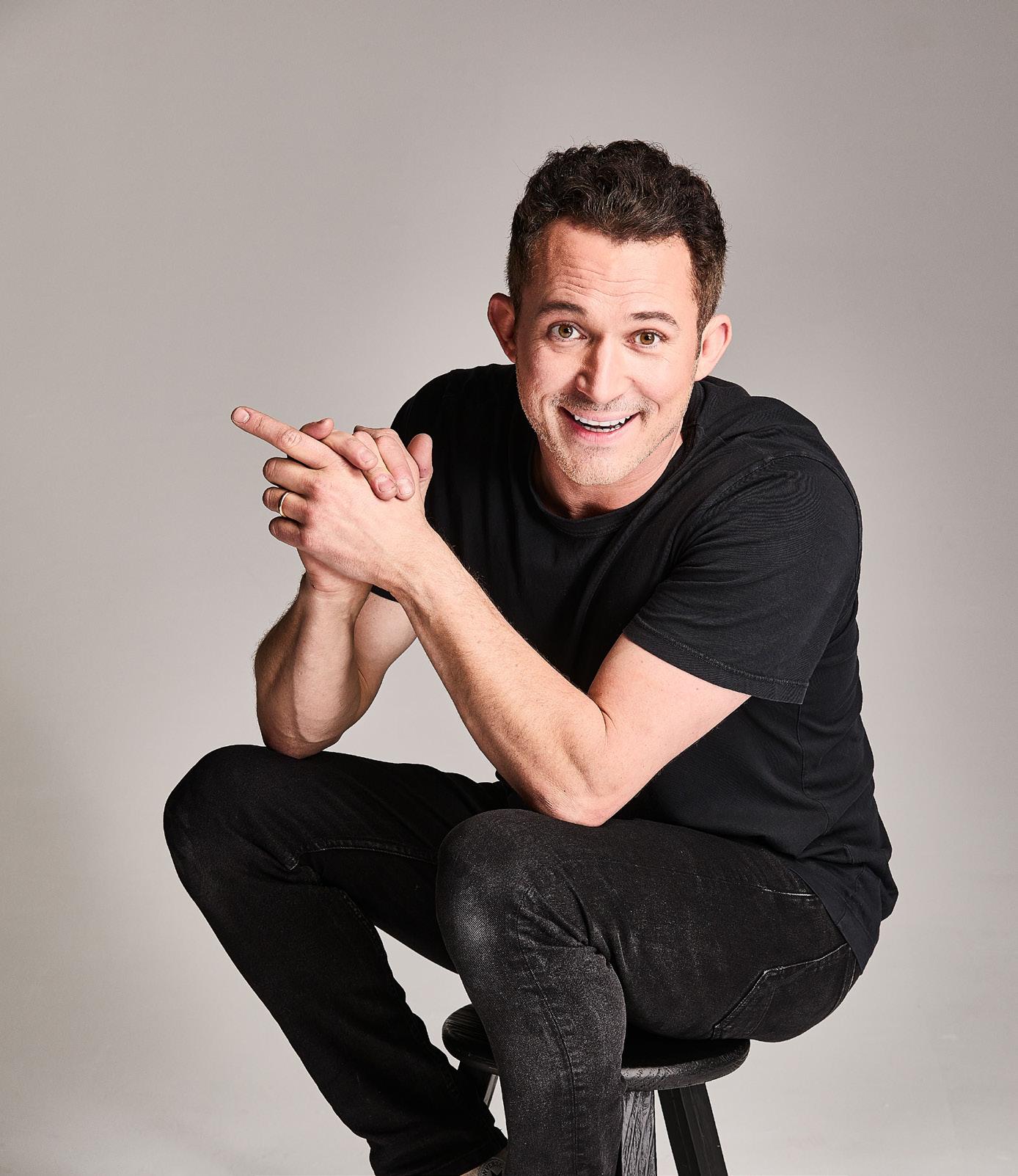
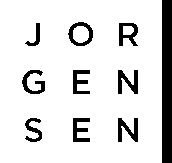





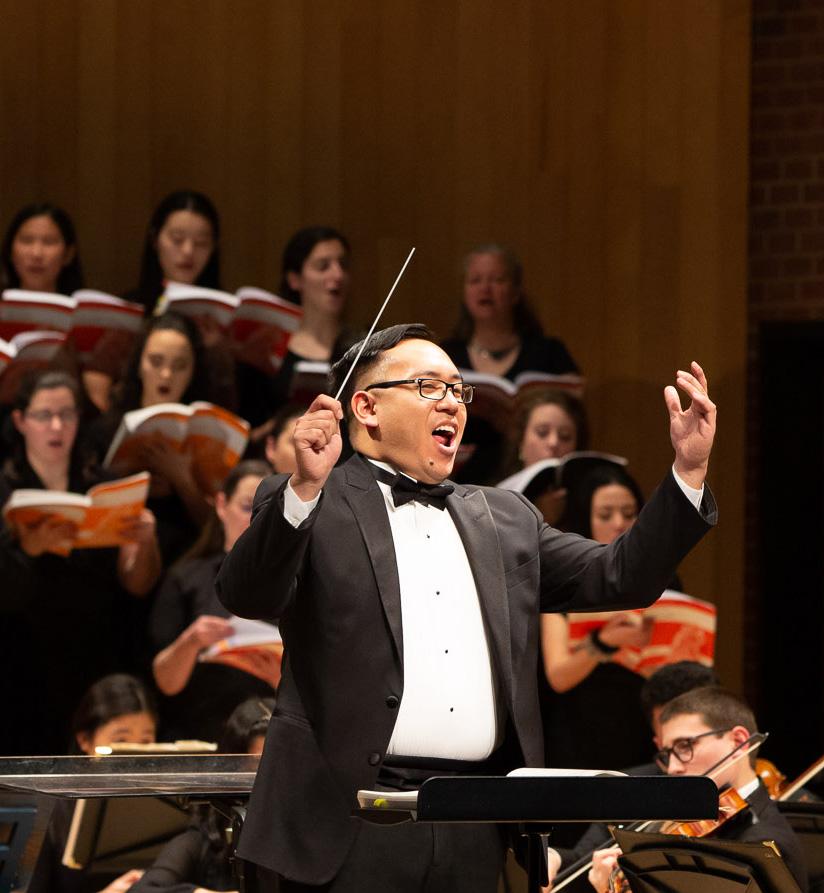
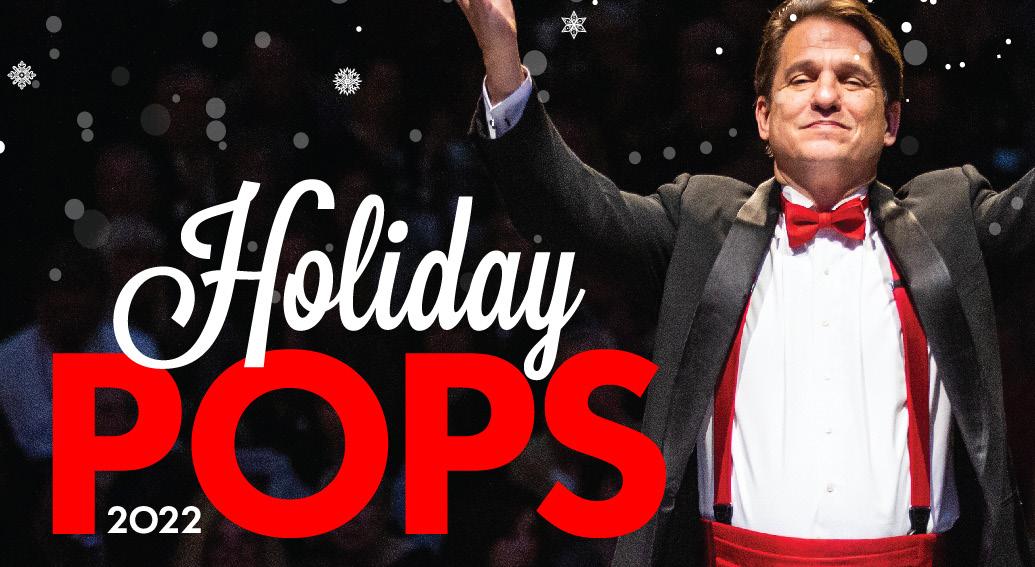


Left: Woman’s dress from 1870s. UConn 1878,20a, b.
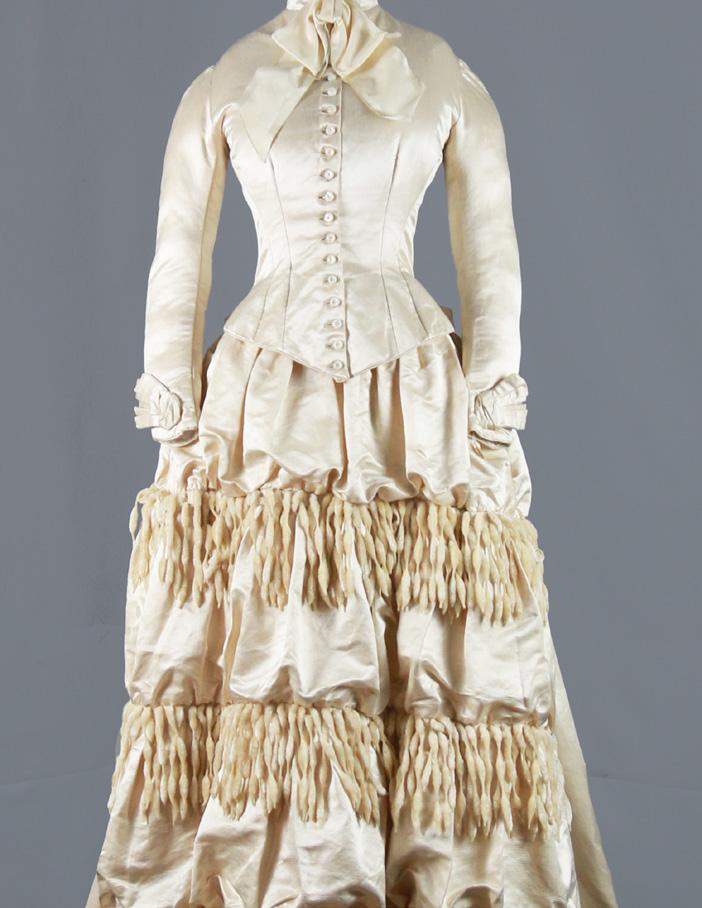
Right: Wool jumper and matching coat, designed by Bonnie Cashin, ca. 1965. Donor: Beatrice F. Auerbach. UConn 1965.7a, b.
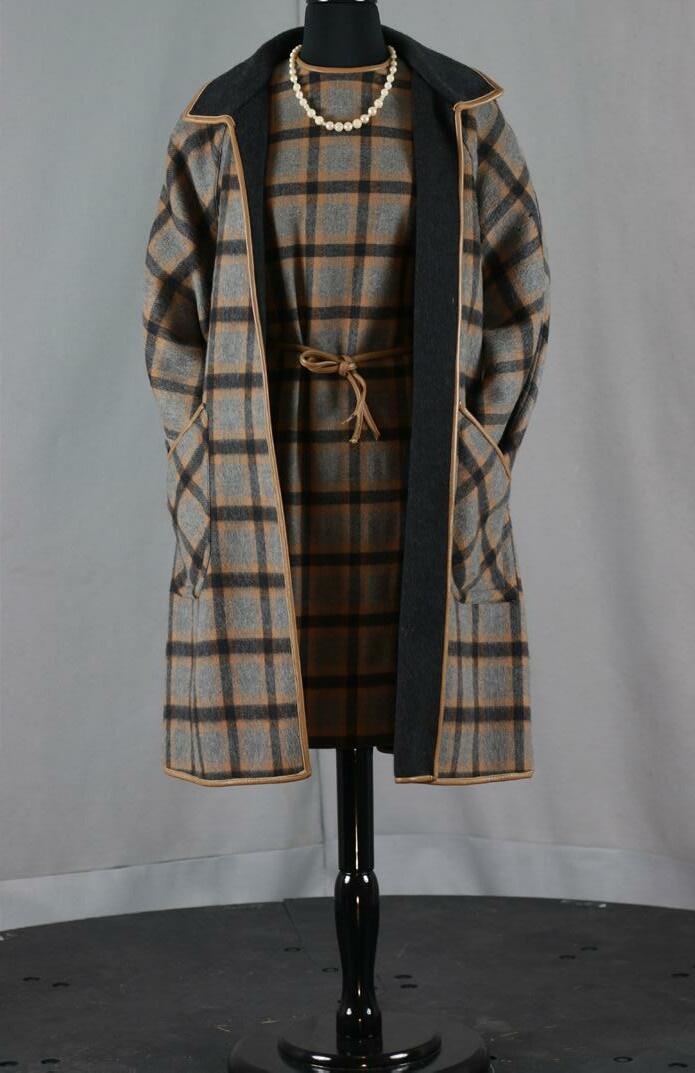
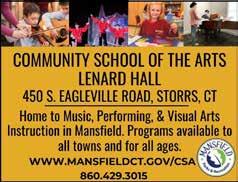
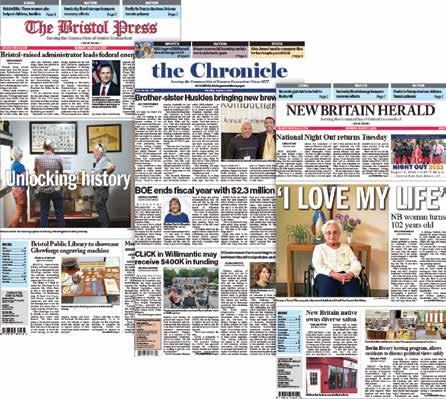

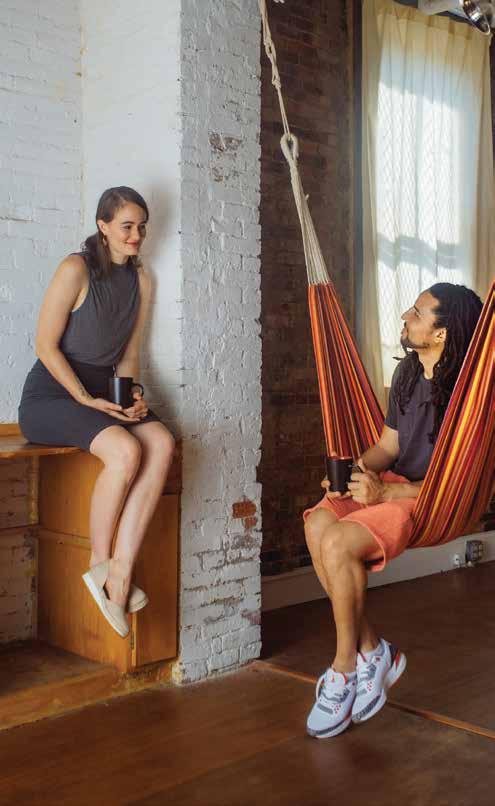

Renee


50 Higgins Highway, Mansfield • 860.423.4414
Coyote Flaco is a family owned & operated restaurant. We invite you to try some of our favorite dishes such as our churrasco or one of our home-made tamales. Please try our many “Fresh-Lime Juice” margaritas, our full menu can be found at www.coyoteflacoct.comcoyoteflacomansfield.com


One Dog Lane, Storrs • 860.429.4900
Northeastern Connecticut’s European/American cafe, offering something for everyone from early morning to late at night. Our menu and our daily specials emphasize seasonal, local and freshly-pre pared food, all made to order. Offering a wide variety of sandwiches, grilled items and freshly tossed salads or help yourself to coffee at our self-service coffee bar. Offering indoor and outdoor seating. Whether you are in a hurry or want to take some time and relax with friends, our style of service lets you set your own pace. Serving beer & wine.

Rte 195, Storrs Center • 860.477.0200
“The Fresh Fork Café is a fast casual restaurant owned by a University of Connecticut Alum. Their menu includes many Vegan and Gluten Free items alongside traditional café fare. All fruit smoothies, coffee, tea, beer, wine, and craft cocktails accompany the eclectic and inclusive menu. Breakfast served all day and a late night menu available on weekends. Catering available
Adamec Rd., Willington• 860.477.1054




Come and visit Hilltop Restaurant, Bar & Banquet to experience a delicious meal, live entertainment, full bar with flat screen TVs, and more, stop in today. If you’re looking for a place to hold a party or event, call and talk to us about our banquet rooms, Make sure that you call ahead to find out what our Chef’s Specials are. They change daily.


625 Middle Tpke., Storrs • 860.477.1174
Local Gastropub less than 1 mile from campus featuring local craft beer, cocktails and a full bar. Smoked BBQ, Burgers, Award Winning Wings, Salad and Lighter American Fare. Open Wed-Thurs 3-9, Fri 3-10, Sat 1-10, Sun 1-7. Enter as a stranger and leave as a friend, there is something for everyone. Indoor and Outdoor seating, dogs are welcome on the patio. WWW.Hops44.com
10 % off the day of performance with ticket


967 Main Street, Willimantic • 860.423.6777
The Willimantic Brewing Co./Main Street Café is a living landmark restaurant & pub brewery located in Willimantic, in the heart of rural northeastern Connecticut. We offer an extensive menu from fun appetizers, daily specials, gluten free, vegetarian and so much more. Fresh craft beers brewed on site, ciders, cocktails, and guest beers we have some thing to please everyone. Visit us at www.willibrew.com for more information.
Willington Pizza
Rte 32, Willington Center • 860.429.7433
Italian Cuisine served in a 200-year-old home with lovely antique decor. Seating for 200. National award-winning pizza featured on CBS This Morning and ABC Good Morning America. Desserts. Open Mon-Thurs 11am–11pm; Fri & Sat 11am–12am; Sun 11am–10pm. Casual attire. Entrées $6–$13. No reservations. (MC, V, D, AE) Best Pizza, Tolland County by Connecticut Magazine.
Box Office
802 Bolton Road,
Storrs,
Facebook:
Instagram:
Twitter:
Alain Frogley
Megan Monaghan Rivas
Interim Dean
Artistic Director & Head, Department of Dramatic Arts

Michelle S. Polgar Managing Director
Vince Tycer Associate Artistic Director
Panagiota Capaldi Box Office Manager
Alana Conti Company/House Manager
Robert Copley Production Manager
Tom Kosis Production Stage Manager
Michael Beschta Technical Director
John Parmelee Associate Technical Director
Daniela Weiser
Scenic Charge Artist
Susan Tolis Costume Shop Supervisor
Michael Demers Production Master Electrician
Paul Spirito Puppet Arts Technical Supervisor
Jake Neighbors Sound Supervisor
Gino Costabile Interim Properties Manager
